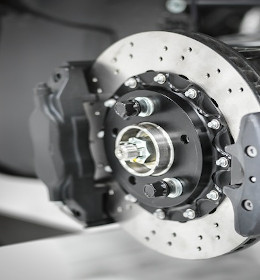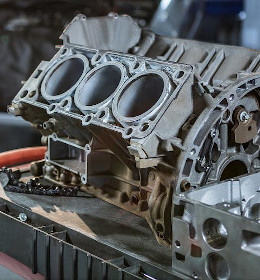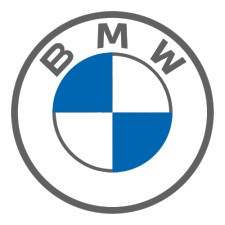Que signifie votre code Code Défaut OPEL ?
Grace au système OBD, les
Opel
fabriqués après 1996 sont normalement équipés d'une prise diagnostique OBD.
Si l'ordinateur de la voiture rencontre un problème,un code d'erreur ou un code de diagnostic (DTC)
sera stocké dans la mémoire de l'ECU de la voiture.
Avec un lecteur OBD branché sur le port OBD (On-Board Diagnostics) de la voiture, vous pouvez lire la liste des codes stockés, et donc découvrir quel est le problème.
Les codes suivent une formule permettant de savoir généralement quel est le problème avant même de regarder le tableau ci-dessous.
Nous vous présentons ci-dessus une liste très complète des différents codes défauts possibles.
Si le code défaut de votre auto s'affiche au tableau de bord, vous n'aurez peut-être même pas besoin d'un lecteur OBD . il sera dans la liste .
Réparer le code défaut de votre auto, c'est potentiellement simple à faire avec vos revues et méthodes techniques.

Réparer le code défaut de votre auto, c’est potentiellement simple à faire avec nos revues et méthodes techniques
| Code | Libellé |
|---|---|
| P1012 | Exhaust Camshaft Actuator Park Position (Bank 1) |
| P1014 | Exhaust Camshaft Actuator Park Position (Bank 2) |
| P1035 | Invalid Signal from ABS (Anti-Lock Brake System) |
| P1070 | Intake Air Temperature Sensor Circuit Low Input |
| P1070 | Intake Air Temperature Sensor Circuit High Input |
| P1088 | Rail Pressure High Pressure |
| P1093 | Fuel System Malfunction |
| P1100 | MAP sensor correlation with mass airflow meter |
| P1101 | Intake Air Flow System Performance |
| P1102 | Detected Mass Air Flow too low |
| P1104 | Compressed Natural Gas Tank Pressure Sensor High Voltage |
| P1104 | Compressed Natural Gas Tank Pressure Sensor Low Voltage |
| P1104 | Throttle Actuator Control (TAC) Motor Control Circuit |
| P1105 | Barometric Pressure Sensor Circuit High Input |
| P1105 | Barometric pressure sensor correlation with turbo inlet pressure |
| P1105 | Barometric Pressure Sensor Circuit Low Input |
| P1105 | Compressed Natural Gas Pressure Sensor Circuit Open or Low Voltage |
| P1105 | MAP sensor/barometric pressure sensor circuit/open |
| P1106 | Boost pressure sensor circuit range/performance |
| P1106 | Boost Pressure Control Device Malfunction |
| P1106 | Boost pressure signal out of range |
| P1106 | Manifold Absolute Pressure Circuit Intermittent High |
| P1106 | Manifold Absolute Pressure (MAP) Sensor Circuit Intermittent High Voltage - Malfunction |
| P1106 | Boost Pressure Sensor Test |
| P1107 | Manifold Absolute Pressure (MAP) Sensor Circuit Intermittent Low Voltage - Malfunction |
| P1107 | Manifold Absolute Pressure Circuit Intermittent Low |
| P1109 | Swirl control circuit high |
| P1109 | Swirl control circuit/open |
| P1109 | Swirl control circuit position sensor, high/low voltage |
| P1109 | Swirl actuator feedback power stage, high temperature |
| P1109 | Swirl control circuit position sensor output |
| P1109 | Swirl control circuit position sensor output range/performance |
| P1110 | Inlet manifold runner control circuit low (bank 1) |
| P1110 | Inlet manifold runner control circuit high (bank 1) |
| P1110 | Swirl control circuit/open |
| P1110 | Swirl control circuit high |
| P1110 | Swirl actuator power stage, high temperature |
| P1110 | Inlet manifold runner control circuit/open |
| P1110 | Inlet manifold runner control circuit/open (bank 1) |
| P1111 | Intake Air Temperature Circuit Intermittent High |
| P1112 | Air temperature sensor 1 circuit low |
| P1112 | Port deactivation position sensor circuit/open |
| P1112 | Port deactivation solenoid, actuation fault |
| P1112 | Port deactivation solenoid, actuation fault at low temperature |
| P1112 | Swirl flap stuck |
| P1112 | Swirl flap adaptation |
| P1112 | Swirlflap |
| P1112 | Port deactivation solenoid circuit/open |
| P1113 | Port deactivation solenoid circuit, general fault |
| P1113 | Port deactivation position sensor circuit/open |
| P1113 | Port deactivation solenoid, actuation fault |
| P1113 | Swirl control circuit low |
| P1113 | Swirl control circuit position sensor, high/low voltage |
| P1113 | Port deactivation solenoid circuit/open |
| P1114 | Engine Coolant Temperature Circuit Intermittent Low |
| P1115 | Engine Coolant Temperature Circuit Intermittent High |
| P1120 | Accelerator Pedal Position Sensor 1 Incorrect Signal |
| P1121 | Throttle Position Sensor Circuit Intermittent High |
| P1122 | Accelerator pedal position sensor 2 range/performance |
| P1122 | Accelerator pedal position sensor 1-2 correlation |
| P1122 | Accelerator pedal position sensor 2 circuit/open |
| P1122 | Throttle position sensor circuit, intermittent low voltage |
| P1125 | Accelerator Sensor |
| P1125 | Boost pressure signal out of range |
| P1125 | Electronic throttle control limited performance mode |
| P1125 | Throttle Actuator |
| P1125 | Throttle actuator control motor circuit low |
| P1125 | Throttle position output power stage, high temperature |
| P1125 | Throttle actuator control motor circuit/open |
| P1125 | Throttle position output range/performance |
| P1125 | Throttle position output circuit/open |
| P1125 | Turbo pressure control solenoid, excessive/insufficient flow |
| P1125 | Turbo pressure control solenoid 1 circuit/open |
| P1130 | O2 Sensor 1 Signal no Activity detected |
| P1130 | O2 Sensor Circuit Low Signal Variance Detected (Bank 1 Sensor 1) |
| P1130 | O2 Sensor Protection Relay Circuit Low Voltage (Bank 1, Sensor 1) |
| P1130 | O2 Sensor 1 Signal Out of Range |
| P1130 | O2 Sensor 1 Signal Switching Time Error |
| P1130 | O2 Sensor Protection Relay Circuit High Voltage (Bank 1, Sensor 1) |
| P1131 | O2 Sensor - System Too Lean (Bank 1) |
| P1132 | O2 Sensor - System Too Rich (Bank 1) |
| P1133 | HO2S Insufficient Switching Sensor 1 |
| P1133 | Intake Air Flow System Performance |
| P1134 | O2 Sensor - Transition Switch Time Ratio (Bank 1 Sensor 1) |
| P1134 | O2 Sensor Signal Change Incorrect Ratio (Bank 1, Sensor 1) |
| P1136 | O2 Sensor Protection Relay Circuit High Voltage (Bank 1, Sensor 2) |
| P1136 | O2 Sensor Protection Relay Circuit Low Voltage (Bank 1, Sensor 2) |
| P1138 | O2 Sensor Circuit Malfunction (Bank 1 Sensor 2) |
| P1154 | O2 Sensor - Transition Switch Time Ratio (Bank 2 Sensor 1) |
| P1167 | Fuel Supply System Rich During Deceleration Fuel Cutoff |
| P1168 | Fuel Tank Temperature Sensor Low Input |
| P1169 | Fuel Supply System Rich During Deceleration Fuel Cutoff |
| P1170 | Fuel System Malfunction |
| P1170 | System too rich (bank 1) |
| P1170 | System too lean (bank 1) |
| P1171 | Fuel supply system lean during power enrichment |
| P1173 | Engine temperature high |
| P1173 | Fuel reduction caused by low fuel temperature |
| P1173 | Fuel reduction caused by high coolant temperature |
| P1173 | Fuel reduction caused by high pump temperature |
DEFINISSEZ VOTRE MARQUE POUR ACCEDER A VOS CODES DEFAUTS
-
Revue technique RTA

Revue Technique Automobile
La revue technique de référence depuis 1946. La RTA est une revue papier pour tous publics, qui vous permet d'effectuer les petites et les grosses réparations
 Voir le descriptif
Voir le descriptif
-
Entretien courant MTA

Méthode Technique Automobile
La MTA est issue de nos outils destinés aux pros de l'auto. Ces méthodes en ligne permettent d'effectuer les opérations de maintenances de votre auto (filtres, courroies, etc.)
 Voir le descriptif
Voir le descriptif
-
Toutes réparations MTAx

Méthode Technique Automobile Expert
La MTA expert est un outil en ligne destiné aux experts en mécanique et en carrosserie, pour effectuer tous types de réparations sur une voiture.
 Voir le descriptif
Voir le descriptif















